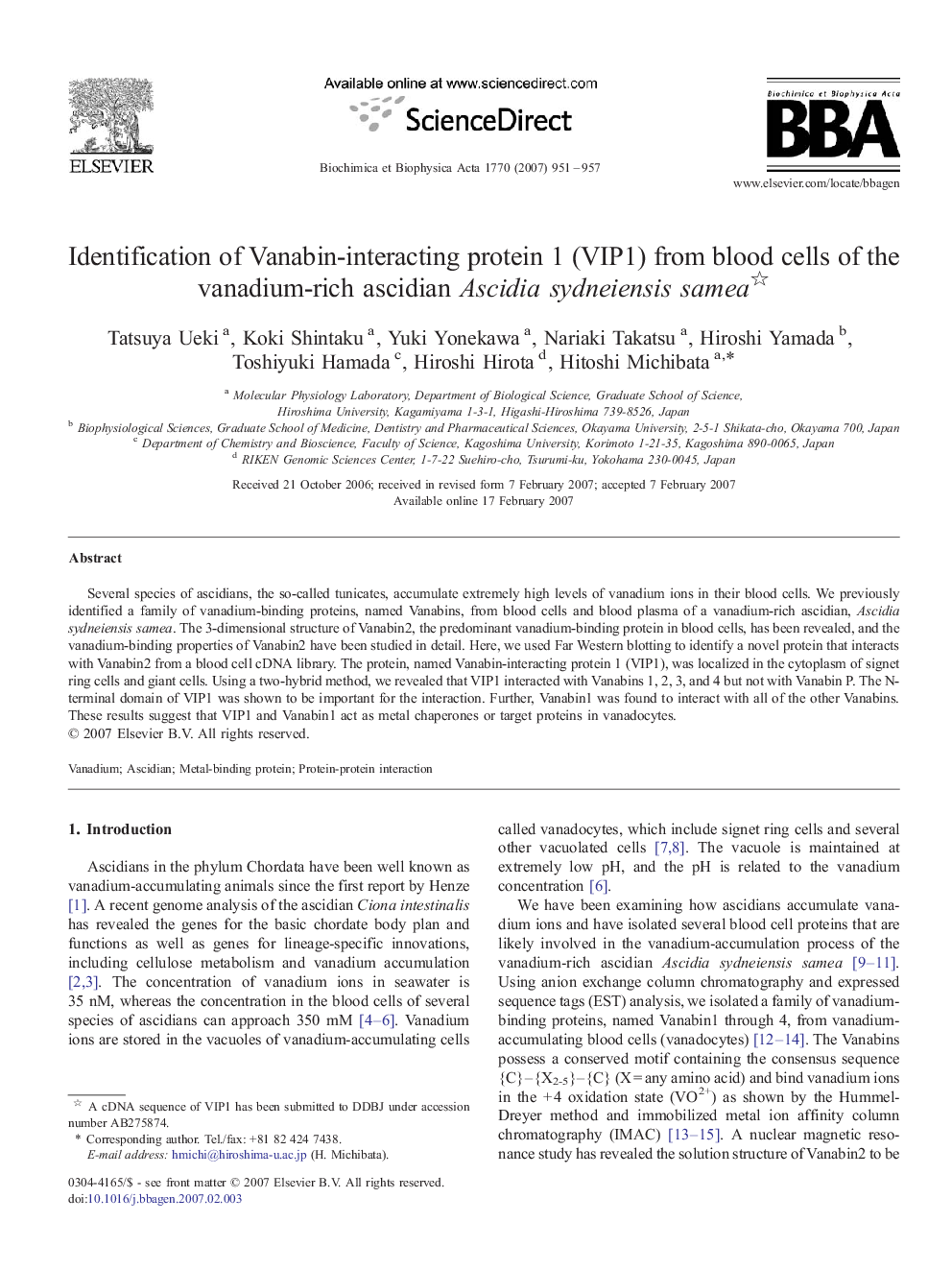| Article ID | Journal | Published Year | Pages | File Type |
|---|---|---|---|---|
| 1948547 | Biochimica et Biophysica Acta (BBA) - General Subjects | 2007 | 7 Pages |
Several species of ascidians, the so-called tunicates, accumulate extremely high levels of vanadium ions in their blood cells. We previously identified a family of vanadium-binding proteins, named Vanabins, from blood cells and blood plasma of a vanadium-rich ascidian, Ascidia sydneiensis samea. The 3-dimensional structure of Vanabin2, the predominant vanadium-binding protein in blood cells, has been revealed, and the vanadium-binding properties of Vanabin2 have been studied in detail. Here, we used Far Western blotting to identify a novel protein that interacts with Vanabin2 from a blood cell cDNA library. The protein, named Vanabin-interacting protein 1 (VIP1), was localized in the cytoplasm of signet ring cells and giant cells. Using a two-hybrid method, we revealed that VIP1 interacted with Vanabins 1, 2, 3, and 4 but not with Vanabin P. The N-terminal domain of VIP1 was shown to be important for the interaction. Further, Vanabin1 was found to interact with all of the other Vanabins. These results suggest that VIP1 and Vanabin1 act as metal chaperones or target proteins in vanadocytes.
